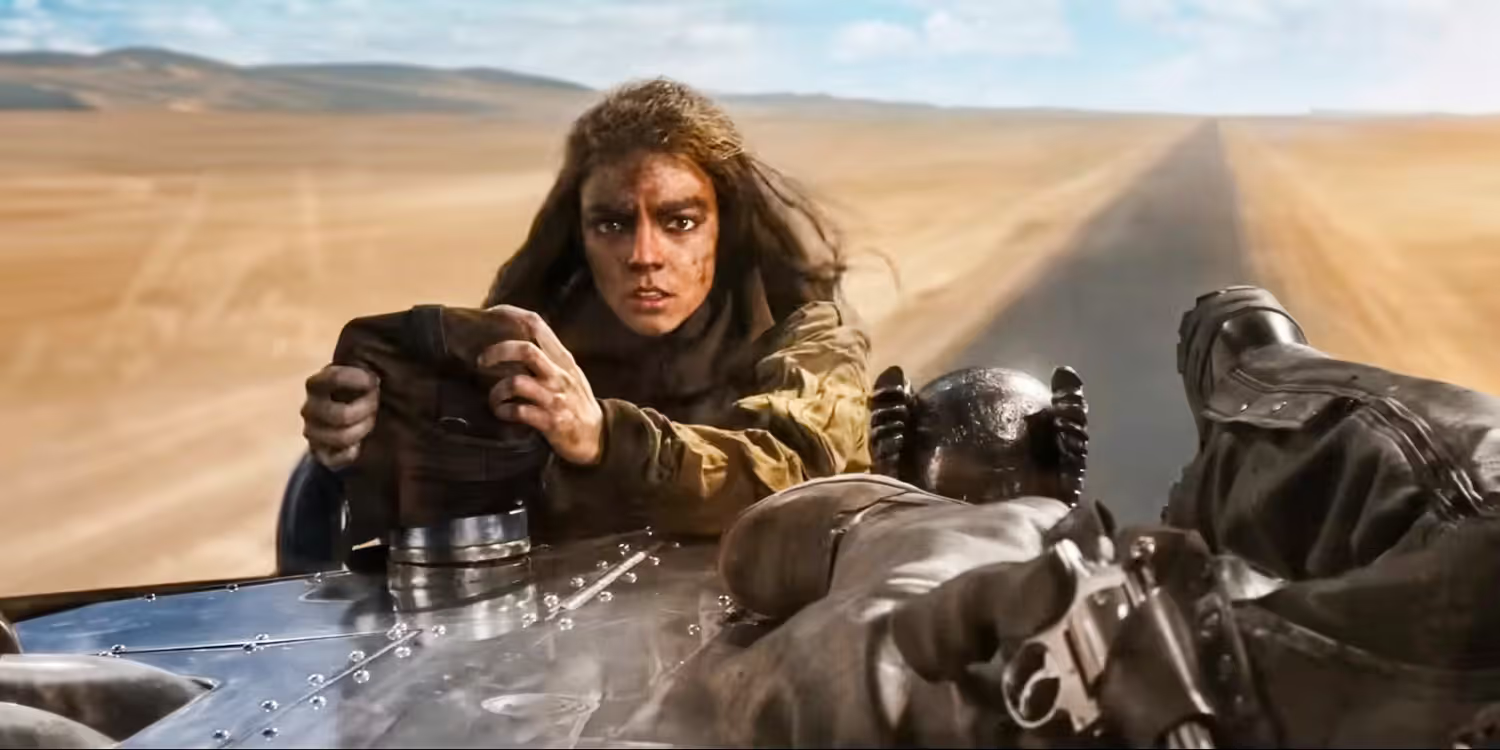Furiosa: A Mad Max Saga, dir. George Miller
I’ll cut to the chase. I generally loved and enjoyed Furiosa. In fact, I knew it was going to be good from the outset.
I first heard of this film in early 2022, through Kyle Buchanan’s excellent oral history of the making of Mad Max: Fury Road. What amazed me was how, in trying to give Charlize Theron enough context for why her character Furiosa ends up smuggling Immortan Joe’s wives sex slaves out of the Citadel into the Green Place, they ended up with a feature-length story about where Furiosa came from, how she got kidnapped from the Green Place, and how she lost her arm. George Miller and the creative team had this chambered and ready before Fury Road was shot; no studio executives brainstormed this by committee.
Anya Taylor-Joy has remarkably few lines in the entire film, ably stepping up to the challenge both Tom Hardy and Charlize Theron both faced in Fury Road. With Furiosa, Taylor-Joy is now a bona-fide action star. Her character work gels perfectly with George Miller’s action-scene-as-both-sensory-overload-and-dramatic-arc. She is able to hit both her stunt mark and her emotional beat simultaneously, especially in the first action centrepiece (near the midpoint of the film) that sees the War Rig endure an onslaught for what felt like twenty hot desperate breathless minutes. Furiosa goes from stowaway to first officer (see Miller’s penchant for action as drama), and it is glorious to watch in IMAX.

Pre-stowaway Furiousa spent years forced to masquerade as a dumb boy in Immortan Joe’s Citadel, something The New Yorker’s Justin Chang likens to an “antipodean Mulan”. In fact, Furiosa’s silence continues even after the War Rig’s captain (played by stage and TV character veteran Tom Burke, who does a lot with very little as well) sees that she is female. As if a strong woman, in Miller's Mad Max-verse, is a silent one, almost masculine.
What gave Fury Road a progressive depth were females fighting alongside and against males in a traditionally testosterone-soaked arena. (Eve Ensler actually consulted for them on how to properly portray Immortan Joe’s wives as not simply victims but individuals with agency.) This worked brilliantly for a film that was essentially a 120 minute chase sequence, where characters' actions (and not their words) revealed who they were. Furiosa, however, is a conventional five-act origin story. (The film itself has five chapters each with their own title card.) To have the protagonist not speak for the majority of the film threw this off balance: the film turns around at the end and has her have an extended exchange with the central antagonist (more on him below) before delivering her coup de grâce.
The audience in this prequel are also brought into the Bullet Farm and Gastown, near-mythic locations in Fury Road, now sites of pivotal action sequences, but also of feudal strategy and negotiation. The big baddie of the film is Dementus, played by Chris Hemsworth, a feudal lord in the post-apocalypse of the Australian desert. He’s not a very good one, the kind of toxic yet incompetent boss internet memes endlessly skewer. Dementus recklessly (and selfishly) throws his own men under the bus (in this film, under a chromed-up 16-wheeler), and makes plays for power in the wasteland that peter out.
I found Hemsworth unconvincing as the central villain. (I suspect Tom Burke would have done a much better job, see him as Napoleon in some forgotten TV documentary here.) In his hands, Dementus is portrayed as a loquacious, vainglorious emperor-wannabe: equal parts David Brent, Jack Sparrow, and Crocodile Dundee trying to do Shakespeare. In fact, I am quite fond of Hemsworth’s first outing as Thor. Under Sir Kenneth Branagh’s direction, the Norse god got a Shakespearean treatment. Annoying and tragically, Hemsworth abandoned this in favour of SNL-esque comedy hijinks in later sequels.
The role of Dementus requires sharp comedic timing and a knack for rococo villainous dialogue, neither of which Hemsworth has. They also try to make Hemsworth physically ugly with a prosthetic nose and buck teeth. But our boy Chris is simply too handsome for this to work.
There’s at least two more Mad Max sequels in the works, and one hopes Miller’s style of thoughtful, inventive, visceral, and relentless in-camera action continues to leave a (deeper) mark in cinema. His action sensibilities have yet to wash through popular film the same way bullet time, wire-fu and (more recently) MMA have. 70-year-old George Miller is still at the pinnacle of his cinematic powers, but I hope we find a Taylor-Joy to his Theron very soon.
Member discussion